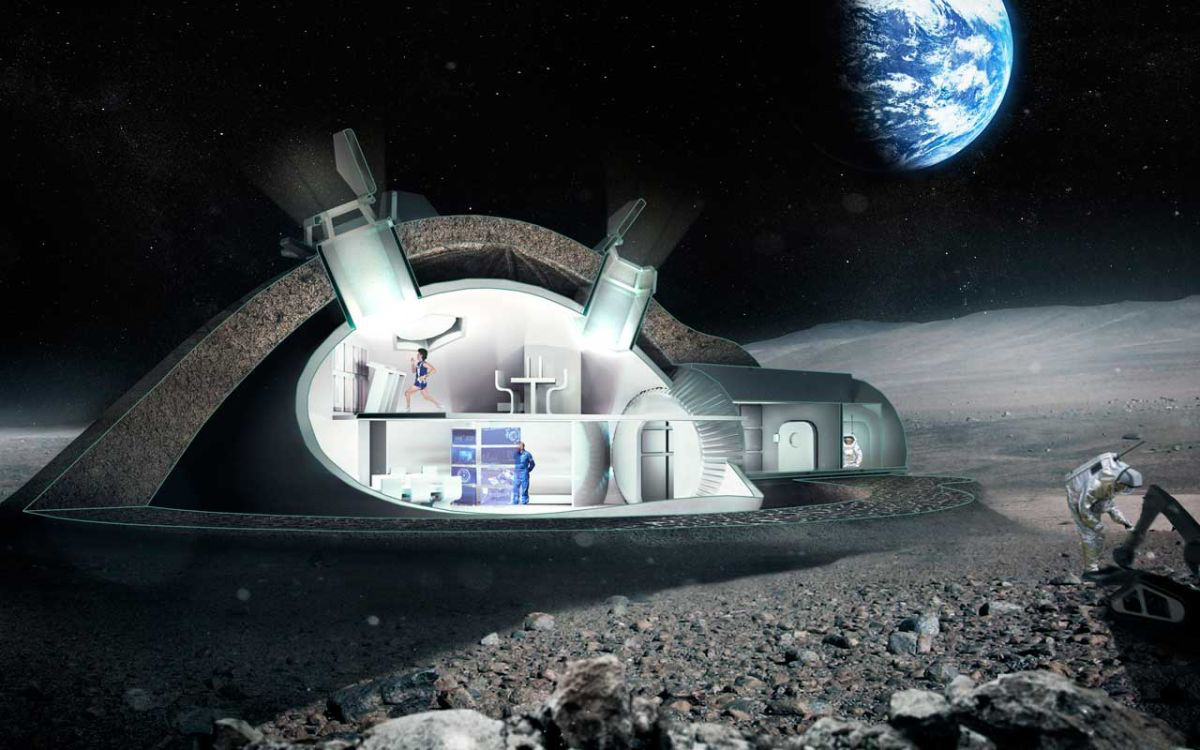Throughout the Fall 2019 academic semester CLASS in partnership with the Florida Space Institute will be holding a seminar speaker series. The series is open to everyone. Seminars last 45 minutes with 10 minutes for questions. If you are interested in presenting, wish to recommend someone for a presentation, or would like to be on the mailing list, please contact us.
| Date | Speaker |
|---|---|
| 9/11 | Alison Lowndes, NVIDIA |
| 9/25 | Garrett Schieber, Georgia Tech |
| 10/9 | David Masten, Masten Space Systems |
| 10/22 | Kelsi Singer, SwRI |
| 11/6 | Nicole Shumaker, Texas A&M |
| 11/20 | Paul Abell, NASA JSC |
| 12/4 | Koorosh Raghabi, NASA JSC |
Date: Nov 6, 2019
Time: 11:30am
Recorded talk: Watch here
Geo-materials science methodology for lunar ISRU construction
Abstract
As the nation and the world prepare for a long-awaited lunar return, there is an urgency to develop and test construction methods that make the most use of in-situ materials for critical infrastructure features that would enable repeat landings at a given site(s) and become the anchor points of a sustained presence and settlement. Site preparation – including regolith stabilization for landing platforms and berm building – will be needed to contain high-speed ejecta caused by rocket exhaust plumes and to keep the regolith from being blasted into lunar orbit, threatening damage to any and all assets in its path. In order to make progress in such in-situ construction, substantial knowledge gaps in geotechnical materials properties and performance must be studied.
Leveraging A&M’s expertise in multi-scale geo-materials characterization, we propose to establish a methodology that informs how to best use the moon’s in-situ materials as the basis for lunar construction and manufacturing. Through this research, which is already underway for military and expeditionary construction, we endeavor to establish methods for the design and testing of the materials themselves while also considering the robotic and automated systems that will work with them.
This seminar will 1) set the stage for the lunar environmental conditions that need to be considered and incorporated into the modeling/testing regime, 2) describe the methodology that is in development for the military and 3) outline a plan for adapting the methodology for the lunar environment.
Sarah Deitrick is a Lunar Exploration Geoscientist in the Astromaterials Research and Exploration Science (ARES) Division at NASA’s Johnson Space Center. She uses remote sensing and lunar sample data to understand lunar surface properties and the resource potential of the Moon. Sarah also studies the development of planetary surface simulants for engineering systems and helps with advanced mission planning such as identifying safe landing sites for the Artemis missions that will return humans to the surface of the Moon by 2024.
Sarah received a B.S. in Planetary Geoscience from Arizona State University and is currently pursuing her M.S. in Space Resources from the Colorado School of Mines where she is performing landing site selection for Lockheed Martin’s McCandless Lunar Lander.
Jeff Bullard is a Professor at Texas A&M University with appointments in both the Zachry Department of Civil and Environmental Engineering and in the Department of Materials Science and Engineering. His research uses computational materials science, novel experimental measurement methods, and machine learning to better understand and predict the kinetics of phase transformations and microstructure development in composites, with an emphasis on cementitious materials. As part of that work, he has developed several computational tools for simulating or characterizing microstructure evolution, including the Virtual Cement and Concrete Testing Laboratory, THAMES, HydratiCA, and MicroChar.
Jeff received a PhD in Materials Science and Engineering from the University of California, Berkeley, and worked as a materials research engineer at the National Institute of Standards and Technology for 18 years before joining Texas A&M this year.
Nicole Shumaker is Research Specialist V in the Construction Science Department of the College of Architecture at Texas A&M University. She provides strategic direction as well as hands-on execution to help lead projects in Earth-based and extraterrestrial engineering and construction research. She currently develops collaborations between Construction Science, Geosciences, Civil, Materials, Industrial and Aerospace Engineering and pursues sponsored research opportunities with NASA, DoD, DoE, NSF and industry partners.
Nicole received a B.S. in Earth and Atmospheric Sciences from the Georgia Institute of Technology and worked as a research assistant in groups specializing in atmospheric trace gas measurement and global atmospheric chemistry and transport modeling. She worked in industry for 20 years developing interdisciplinary projects with globally dispersed experts working at the forefront of technological innovations for the built environment before joining Texas A&M this year.
